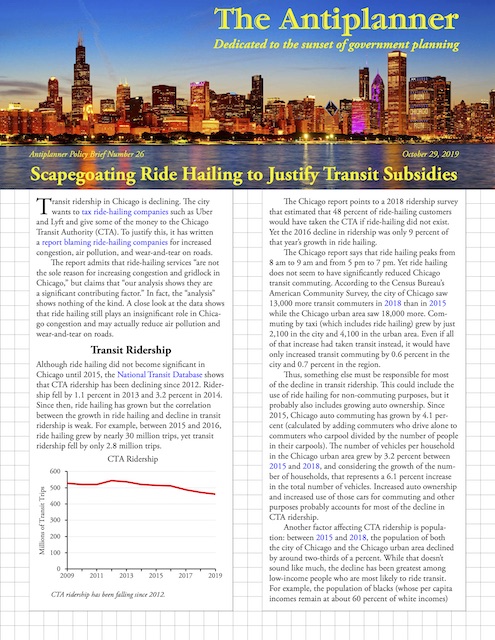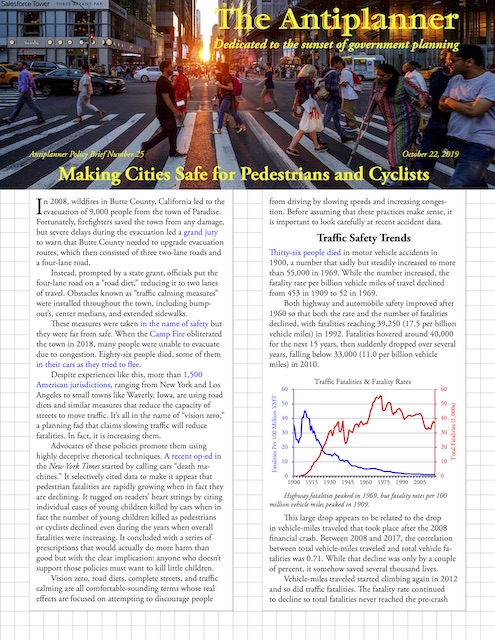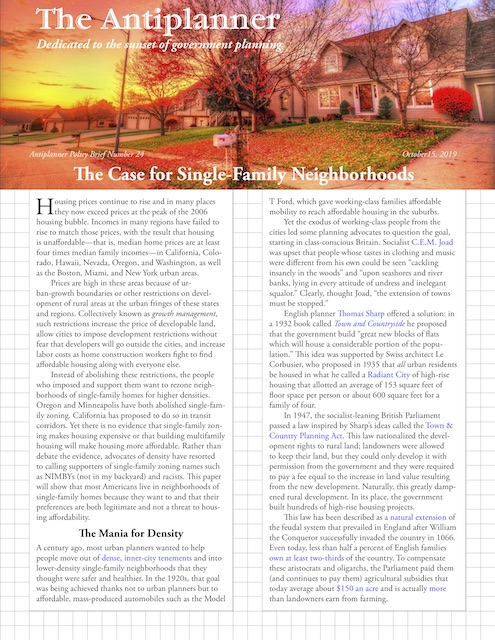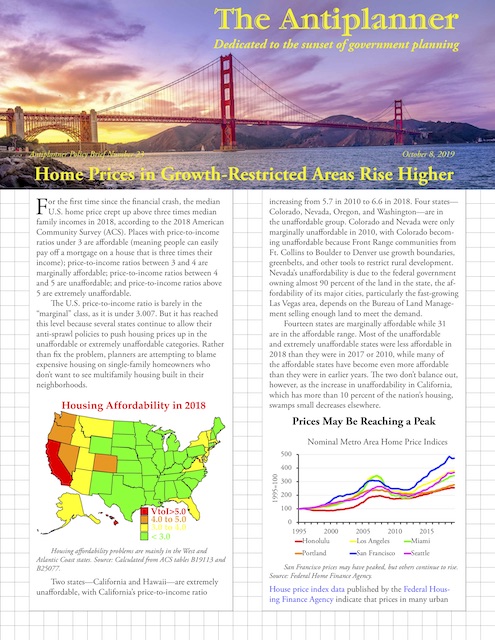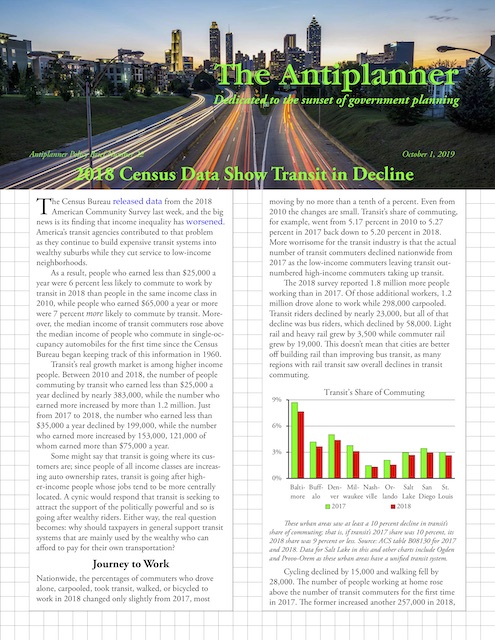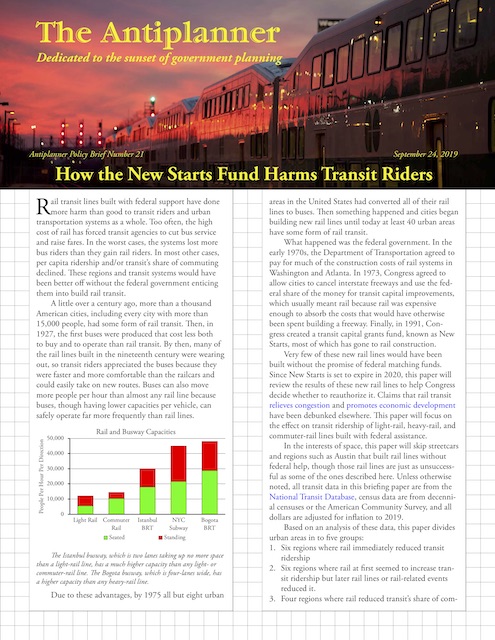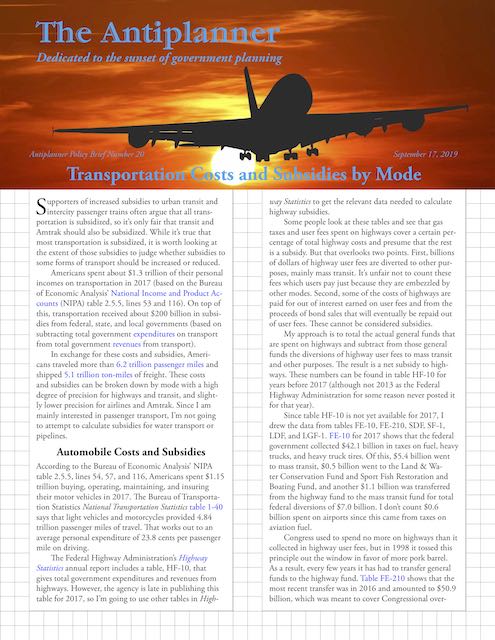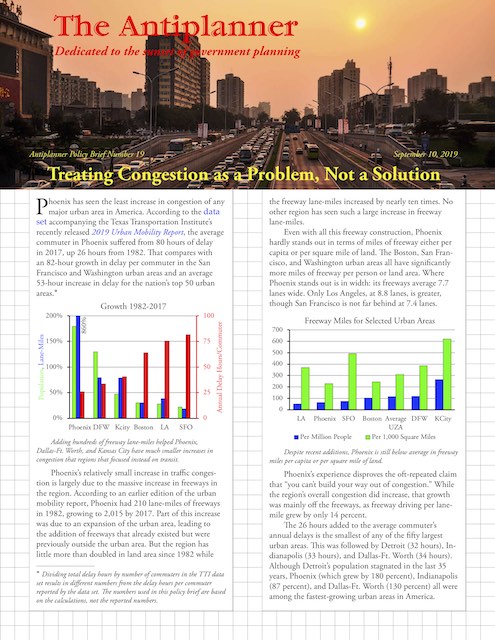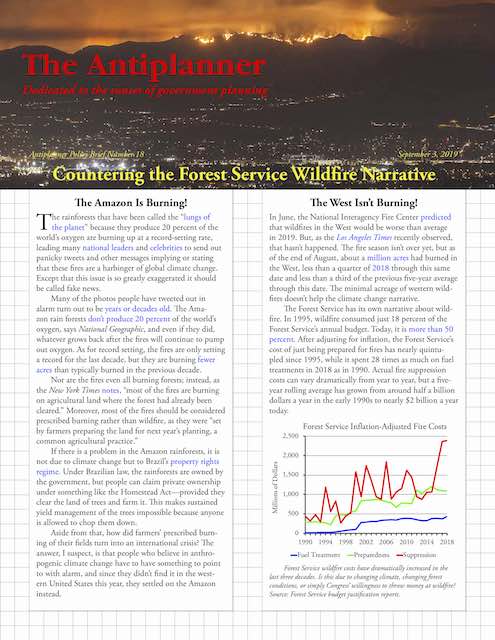Austin is one of the fastest-growing cities in America, and the city of Austin and Austin’s transit agency, Capital Metro, have a plan for dealing with all of the traffic that will be generated by that growth: assume that a third of the people who now drive alone to work will switch to transit, bicycling, walking, or telecommuting by 2039. That’s right up there with planning for dinner by assuming that food will magically appear on the table the same way it does in Hogwarts.
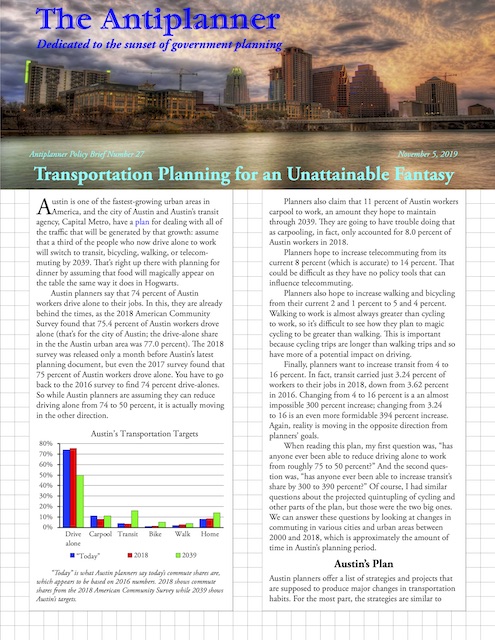
Click image to download a 4-page PDF of this policy brief.
Austin planners say that 74 percent of Austin workers drive alone to their jobs. In this, they are already behind the times, as the 2018 American Community Survey found that 75.4 percent of Austin workers drove alone (that’s for the city of Austin; the drive-alone share in the the Austin urban area was 77.0 percent). The 2018 survey was released only a month before Austin’s latest planning document, but even the 2017 survey found that 75 percent of Austin workers drove alone. You have to go back to the 2016 survey to find 74 percent drive-alones. So while Austin planners are assuming they can reduce driving alone from 74 to 50 percent, it is actually moving in the other direction. Continue reading

